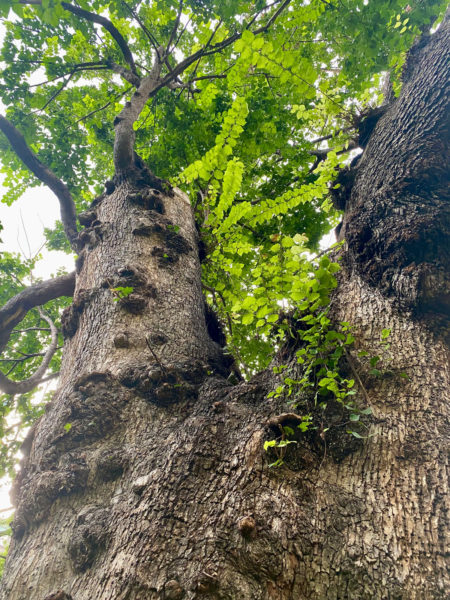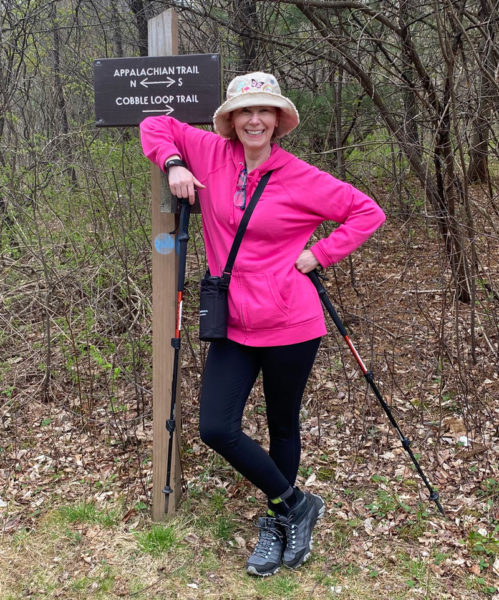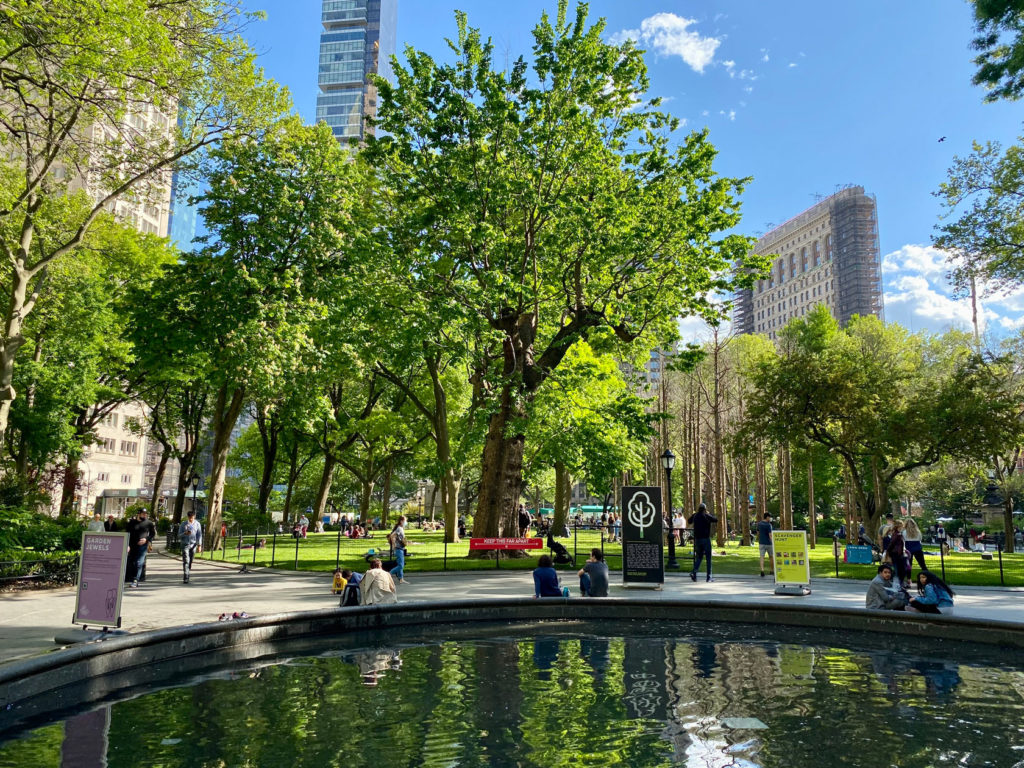Throwing Shade: At least two centuries old, my Grandpa Elm provided socially distanced shade, support and much-needed oxygen during our tense, mask-wearing summer of 2021.
We all know that nature nurtures us. Scientific studies confirm there are benefits when you step onto a forest trail, hear a breeze rustle the leaves, touch the roughness of bark and smell the scent of pine needles and wildflowers. So what’s stopping you? Just don’t forget the sun protection!
If a friend asked what helped you most during the worst days of the pandemic, what would you say? Feel free to insert a joke here about wine, stretchy pants, potato chips or puppy videos. No doubt those helped me, as did friends, family — and a job where I could safely work from home. (Not to mention the heroic health-care workers whom we saluted every evening at 7 PM by banging pots and pans and cheering loudly.)
But what really saved my soul, I think, was nature. Maybe you feel that way, too?
During that terrible spring and summer of 2020, with my mother in hospice care 1,500 miles away and so much we didn’t know yet about the virus, I coped as best I could. If it involved more carbs and couch time than usual, so be it. But one thing helped sustain me, every day: walking to the tiny six-acre park a few blocks from where I live in Manhattan. More specifically, I was visiting a gnarly old English elm tree that had managed to resist Dutch elm disease and everything else that had threatened it since the park officially opened to the public in 1847.
I’m talking about Madison Square Park, which is not far from The Skin Cancer Foundation offices. We had adjusted well to remote work, but since I lived nearby, I went to the office once a week to water the plants and check the mail. And visit Grandpa Elm on the way. I also loved seeing the beautiful old sycamore trees with their distinctive peeling bark, the resolute oaks, always reluctant to drop their leaves until winter is truly upon us, and every kind of seasonal flowering plant that blooms in our crazy NYC weather. I walked, leaned, sat, breathed. Just thinking about it makes my heart rate slow down and my blood pressure drop.

Arboreal Survivor: Madison Square Park was named for our fourth president, and this massive English elm has witnessed the history of 42 more presidents in its still hale and hearty lifetime.
It may seem obvious that communing with trees and nature provides benefits for your health and well-being, but, of course, that’s not how science works. You need proof. Turns out, this topic is well-studied, especially the specific benefits of “forest bathing,” or, less pretentiously, hanging out with trees and green spaces. Better reporters than I have perused the reams of data and summarized the significant health benefits. When I was the health director at Reader’s Digest and Ladies’ Home Journal years ago, I used to call this “duh” research. (For example: kids who accrue 10 hours a day or more of screen time tend to be more sedentary and have higher incidence of obesity. Duh.) A 2021 article in Outside magazine addresses this with the line: “Nature as medicine is a cliché with a robust pedigree that you can trace back to our sun-worshipping, tree-venerating proto-ancestors millennia ago. The idea started going scientific in the early 1980s …”
I’ll spare you the scientific details, but what’s the right amount of green time? A 2019 article in the journal Nature found that spending 120 minutes a week in nature is associated with good health and well-being. But that two hours has been debated ever since, and no one really knows for sure.
A 2020 American Psychological Association roundup of research lists many proven benefits of green time, including “improved attention, lower stress, better mood, reduced risk of psychiatric disorders and even upticks in empathy and cooperation.” Green spaces near schools can even help with cognitive development. The reason? Likely that aforementioned reduction of stress and focusing of attention, or “mindfulness.”
After my mother died on the Fourth of July, 2020, I was devastated but soon felt the prod of her acerbic can-do spirit. My sister and I kept repeating one of her famous phrases from our childhood: “Go out and find something to do, even if it’s wrong!” We always thought it was hilarious, but she truly did allow us to make our own mistakes. And we got out there and did stuff.
As soon as I finally qualified for a vaccine and got my antibodies moving, I got myself moving, too. It was April 2021, and I needed to go find something to do, even if it was wrong. I loved hiking, and while I wasn’t in the best shape of my life, I signed on for group hikes up in the Berkshire Mountains in western Massachusetts. I found a cute hat, packed lots of sunscreen and started with the “easy” ones. Once I felt confident on those, I consulted with the hiking guides, learned to use poles and hauled myself up to the summit of Monument Mountain, where Herman Melville was inspired to write Moby Dick. In fact, I helped lead the way, setting my pace to that of the guides, who were mostly young enough to be my, well, never mind. I even did the challenging Squaw Peak Trail, with its slippery sheer rock faces and multiple warnings on red and green signs. I lived to tell the tale, thank you very much, and highly recommend hiking poles for such conditions.

Back to Nature: In April 2021, learning to use hiking poles on the Appalachian Trail in the Berkshires restored my confidence after that first dispiriting year of pandemic isolation.
I also helped spread the word to my fellow hikers on the extra importance of skin protection at high altitude, where the sun’s radiation hits you even harder. They were all pretty savvy already, and we talked hats and sunscreens as we happily descended the mountain trail, heading into spring with higher hopes.
I hope things are looking up for you in 2022. Now get out there in nature and find something to do! (Yes, even if it’s wrong.)






